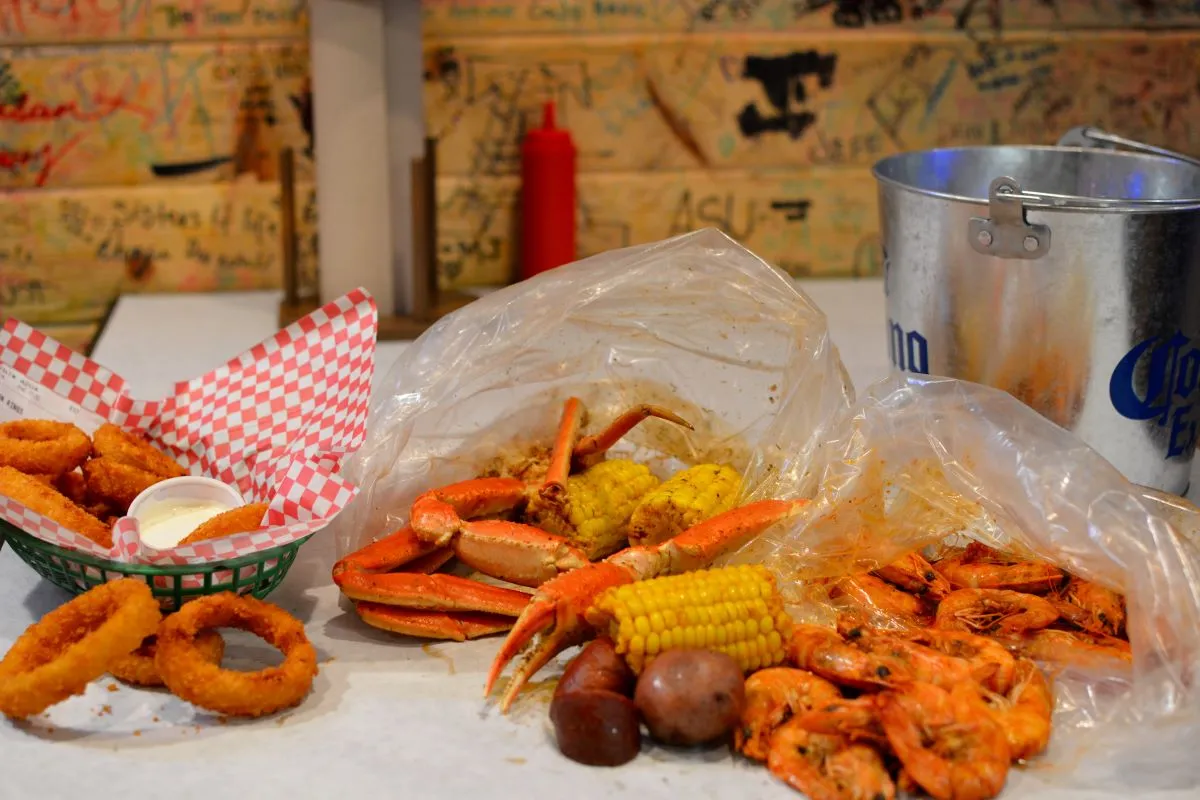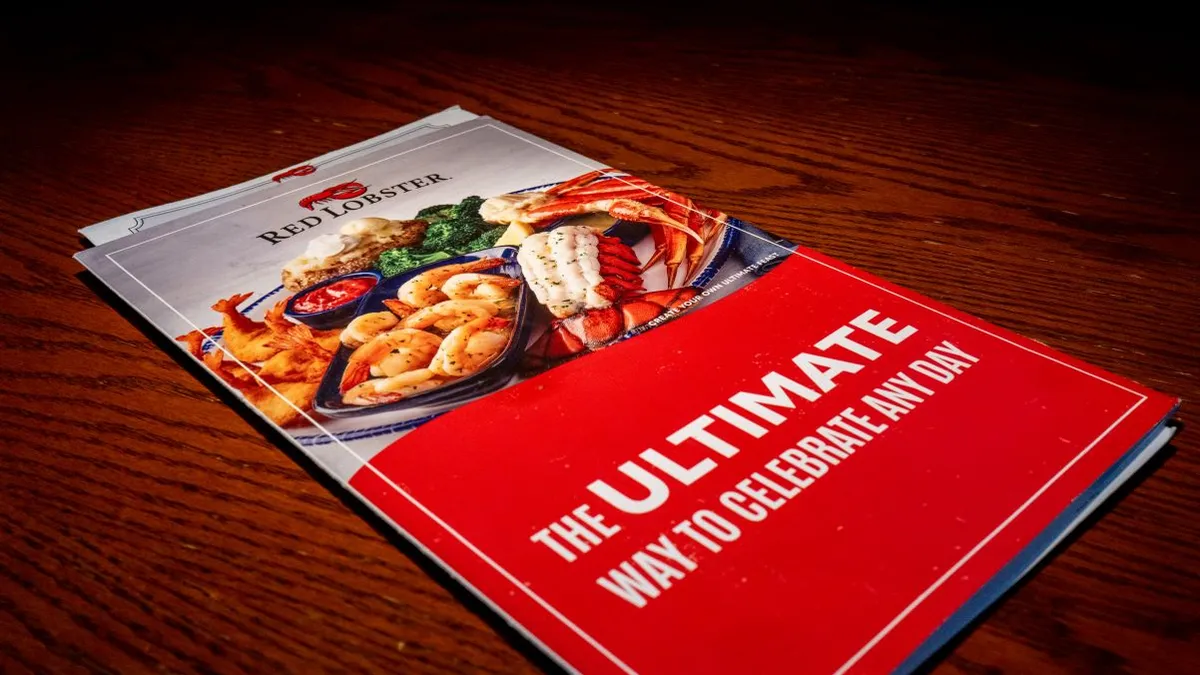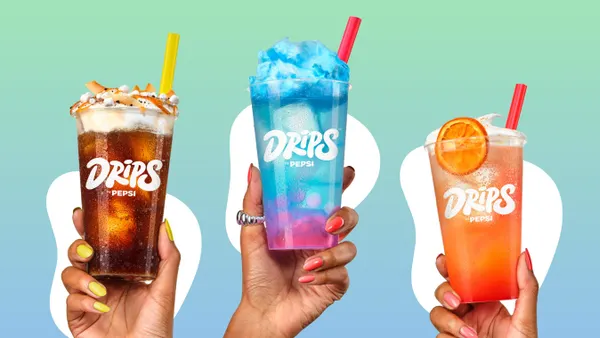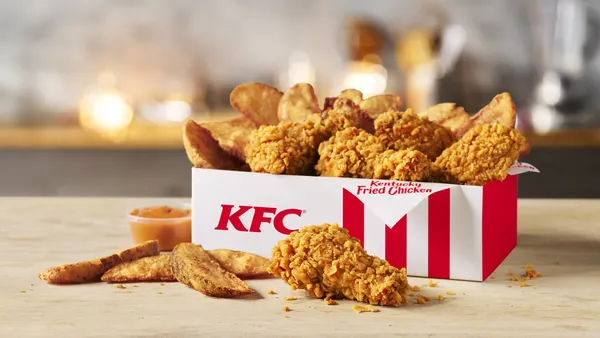From lobster tails to surf and shrimp, Red Lobster has been successful in whetting customers’ seafood appetites. Its limited-time Lobsterfest and Crabfest events, Cheddar Biscuits and oceanic atmosphere have drawn in customers and driven sales for many years.
However, the chain has largely remained unchanged in the past few decades.
“The Red Lobster to me growing up is almost the exact same that it is now,” said Andy Diamond, president of Angry Crab Shack, a 20-plus unit full-service seafood chain. “That was maybe a flaw, not changing and refreshing the brand.”
Many other full-service chains like IHOP, Denny’s, TGI Fridays and Red Robin refreshed their menus in the past year to help drive foot traffic and appeal to younger demographics — something that didn’t happen at Red Lobster beyond LTOs. While diners returned in 2021 and 2022, disposable income has shifted more recently to travel at the expense of restaurants, Diamond said. At the same time, menu prices started going up due to inflation, labor expenses and the cost of goods, further discouraging consumers from eating out. Additional pressure has come from people working from home who are less likely to venture out for lunch and even dinner.
Even with these pressures, Diamond still feels like people are going out, but seeking out locations that can offer new flavors and experiences.
Other seafood chains have found a way to continue growing in an increasingly competitive environment. The 540-unit Captain D’s continues to sign franchise deals — including its largest agreement to date last month — en route to its goal of 1,000 units. The chain has leaned heavily on flexible real estate to provide franchisees with more options for development. It’s also looking into growth within non-traditional locations, like c-stores.
Competitor Long John Silver’s, which underwent a turnaround plan in 2019, launched a new rewards program and app in May as it works to modernize its customer experience.

Why menu development is key to attracting customers
During the past 10 years, Angry Crab Shack has updated its menu by taking steps like adding new sauces, flavors and spices. While it is important to appeal to younger generations, it is equally crucial to understand what appeals to each generation, especially as their dining habits change as they get older, Diamond said.
Angry Crab Shack has always focused on value as a family restaurant and providing “guests more bang for their buck,” Diamond said. That means providing not just food, but an entertaining environment, as well. Angry Crab Shack trains its staff to be energetic and lively. It also showcases its brand and food on social media in a fun way.
Menu development has also meant expanding beyond its traditional seafood boils into other occasions to appeal to more guests. Since its founding, the company has diversified its menu to include foods such as po’boys, shrimp and grits, burgers, chicken sandwiches and salads.
“You have to sort of encompass all sorts of tastes, all sorts of flavors and not be as specialized,” Diamond said.
About six years ago, the chain added customization to its seafood boils. For example, a customer can pick shrimp and crab and a non-spicy garlic sauce, Diamond said. Another customized boil could be lobster tail, shrimp and crab with a medium spicy sauce. For other consumers who didn’t want as much customization, in 2022 it added house favorites, Diamond said.
To increase traffic, the chain added lunch specials last year. Offering discounts is a balancing act, Diamond said, because while you may increase traffic, you could also decrease profitability. To keep the lunch specials in check, Angry Crab Shack limited the menu to Monday through Friday and until 2 p.m.
“If some of the specials that you’ve done to get traffic in the doors canabalizes some of the other products that your guests were coming in for, that brings your average check or profitability down,” Diamond said.
Correction: A previous version of this article incorrectly identified Andy Diamond's job title. He is president of Angry Crab Shack.














